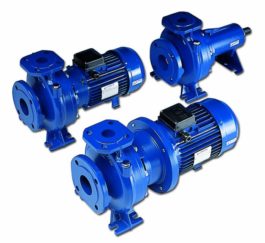Description
Large Peristaltic Pumps
The silent champions of industrial fluid transfer — contamination-free, gentle, and relentlessly reliable.
The Working Principle
At the heart of a large peristaltic pump lies a beautifully simple yet powerful principle — one inspired by nature itself. Just as your digestive system moves food through rhythmic muscular contractions, a peristaltic pump propels fluid by gently squeezing a flexible tube with rotating rollers or shoes.
As the rotor turns, each roller compresses the tube, trapping a precise volume of fluid and pushing it forward. When the roller releases, the tube returns to its original shape, creating a vacuum that draws in the next charge. This continuous wave-like motion delivers steady, pulsation-minimized flow with zero contact between the fluid and the pump mechanics.
The result? Absolute fluid isolation. Corrosive acids, sterile biologics, abrasive slurries — nothing touches the pump. Nothing contaminates your product. And with reversible rotation, you can pump forward, backward, or flush the line in seconds.
Key Components
Every large peristaltic pump is an engineering masterpiece built from just a few critical parts:
- The Tube/Hose – The only wetted part. Made from advanced elastomers or reinforced composites to survive thousands of compression cycles.
- Rotor & Rollers/Shoes – Precision-engineered to deliver exactly the right squeeze — rollers for speed, shoes for extreme pressure.
- Heavy-Duty Drive – Powerful electric or hydraulic motors with gearbox reinforcement for continuous 24/7 duty.
- Robust Housing – Stainless steel or cast iron construction that laughs in the face of harsh industrial environments.
Together, they form a system that’s simpler than a centrifugal pump, tougher than a diaphragm pump, and cleaner than any other positive-displacement design.
Challenges & Real-World Considerations
No technology is perfect. Tube life is the primary consumable — in abrasive service it may last only hundreds of hours. Pressure is typically limited to 8–16 bar. And yes, they use more energy than a centrifugal pump at high flow/low head.
But when you need zero contamination risk, the ability to run dry indefinitely, or to pump shear-sensitive living cells without damage — nothing else comes close.
The Future Is Bright
Today’s large peristaltic pumps are smarter than ever: predictive tube-wear sensors, IoT remote monitoring, energy-efficient VFDs, and next-generation composite hoses that last 5× longer than rubber.
The revolution has only just begun.
Conclusion
Large peristaltic pumps represent the perfect marriage of biological inspiration and industrial muscle.
They move the unmovable — thick sludges, fragile emulsions, deadly acids — all with grace, precision, and absolute purity.
In a world demanding ever-higher standards of safety, hygiene, and sustainability, the large peristaltic pump isn’t just useful — it’s essential.
Ready for the Next Level?
Discover how modern thermal oil systems are pushing efficiency and temperature control to new extremes.







